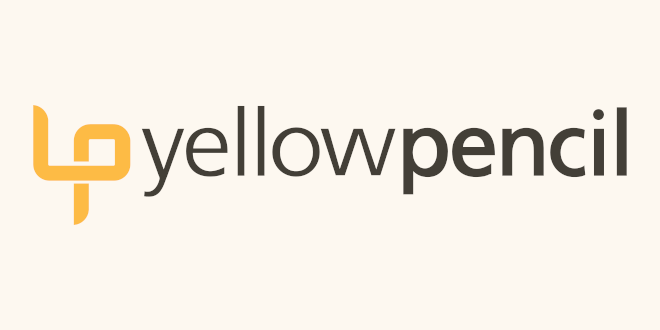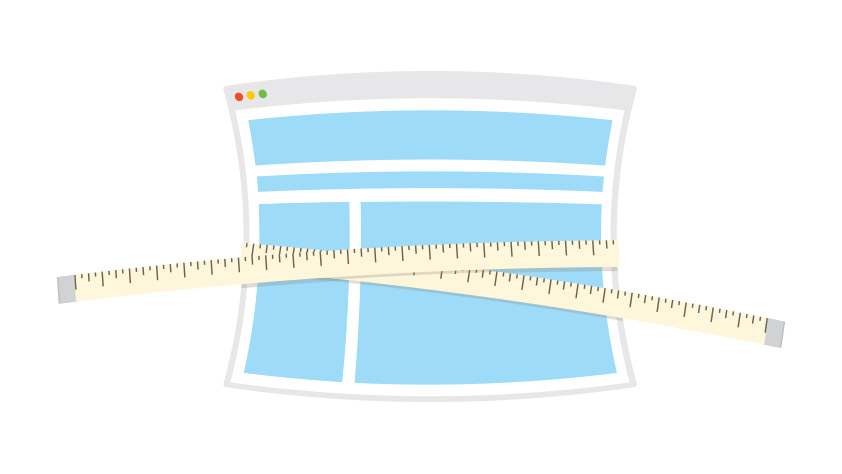
- Internet
- 17.04.2019
- EN
yellowpencil: How to focus your web design project and build value faster with a lean design process
A 4 minute read, written by Graeme
September 4, 2014

If your organization is on the web, your first job is to provide real value for your customers. And now more than ever, you have to do it quickly, efficiently, and with focus.
Lean design methods can help you to better understand your organization’s challenges and opportunities on the web. They’ll help you do the right work faster and more efficiently.
Just what is “Lean”, anyway?
Lean is a methodology. It’s not a fancy, pie in the sky business solution to all your problems. More than anything, it’s a way of thinking; a philosophy. At its core, Lean is about maximizing customer value while minimizing production and process waste.
The Lean methodology was developed in the 1980s based off of the manufacturing process at Toyota. Referred to as the Toyota Production System, it played a huge role in transitioning the company into one of the largest vehicle producers in the world. Although it was originally developed as a manufacturing process, Lean philosophy can be applied to any type of organization. Since it’s more a way of thinking than a specific set of techniques or tools, you can apply Lean principles to the discovery and design efforts of your next website project.
Don’t worry, your plan will probably be wrong
It’s important to have a plan before you start a new project, so you can define the outcomes you want to achieve and measure your success. But that’s no easy task – project planning can sometimes be the most time and effort-intensive part of a project.
Unfortunately for the plan (and your project budget), projects evolve, and your definition of “success” changes. To some extent, no matter how good your plan is, it’s going to be some kind of wrong. Timelines will change, scope will increase, and priorities will shift. That means that most projects start out with a risk of wasted effort right from day one.
The most important thing to remember is that your plan should change. Change based on the right feedback is healthy for the product. If you realize you are building the wrong thing, you should be able to change your plan, and your process should be flexible enough to accommodate that change.
How to minimize waste on your next web design project
A Lean approach will help you avoid all that wasted effort by analysing your team’s output and removing anything that doesn’t add value to your customer.
But this can be a lot harder than it sounds in practice, especially with big teams. Before you start, make sure that everyone’s aligned on these big-picture Lean principles:
Stay focused on the right things
Getting sidetracked or distracted by new-but-unnecessary features can be hugely detrimental to your budget and timeline. Define the stuff that has the most value to your customers. Then stick to it.
Make decisions at the last responsible moment
Make project decisions based on facts and user input, not assumptions and predictions. The longer you collect feedback, the more feedback you have, the more educated your decisions become. Do only the work that is necessary to begin user testing and validating original assumptions. Leave decisions until the last responsible moment to avoid unnecessary, extra effort.
Design collaboratively
Involve the whole project team in design concepting throughout the project. Include as many key stakeholders as possible and allow the designers to facilitate and collect input. This helps create collective understanding and buy-in from everyone, and minimizes the need for detailed documentation. It also presents a broader range of perspectives and ideas to work with.
There’s often the impression that executives or C-suite level stakeholders shouldn’t be involved until closer to the end of the project because their time is limited. But in reality, they’re the most valuable at the beginning: it helps them understand how decisions were made and contribute their ideas. A “big reveal” approach at the eleventh hour risks emotional, uneducated change requests leading to huge amounts of waste.
Start with low fidelity
If you want to avoid waste, you need to avoid large design inventories. Focus on creating minimum viable products that only include what is necessary to test an assumption. Start with low-fidelity prototypes and iterate as you get more feedback. Spend time on the things you know matter (because your real users told you so), not the things you think might matter one day.
How to maximize customer value
In theory, creating value seems like a fairly simple concept. But in practice, customer value tends to get lost in a whirl of business goals, assumptions, bias, and politics. Projects can go off the rails before you even notice – it’s hard to recognize when you’ve lost focus unless you have strong guiding principles.
Organize a strategy workshop
At the start of your project, get the whole project team and all your stakeholders together to define strategy and direction. This workshop will help you:
- Surface everyone’s goals and motivations
- Define who your customers really are
- Understand your team’s existing assumptions
- Define business goals that your product should support
At the end of the day, everyone should understand and agree on who the project is for and why it’s being built. A plan for measuring success will help keep egos in check and hold everyone accountable throughout the project.
Build, measure, learn, repeat
Prototyping and testing are key components of a user-centric Lean design process. But you can’t get the insight you need in a meeting room – you have to get out of the building and get your product into the hands of real people. It’s the only way to validate (or completely destroy) your assumptions.
Get lean with your next web design project
Misplaced priorities and wasted effort are two of the biggest risks in any web project. Use these Lean principles and methods to optimize your web design process, and help your team create focused, user-centred value.
If you haven't already, you can also read more about our lean discovery process. Or if you want to learn more about how we’re implementing a leaner design process at Yellow Pencil and how you can too, let's talk.
Source: How to focus your web design project and build value faster with a lean design process
© copyright 2014 by yellowpencil